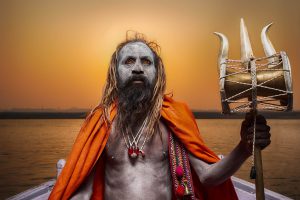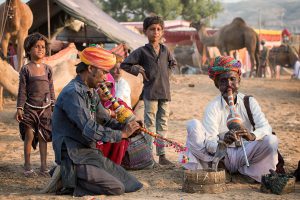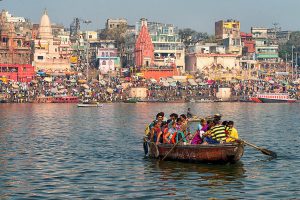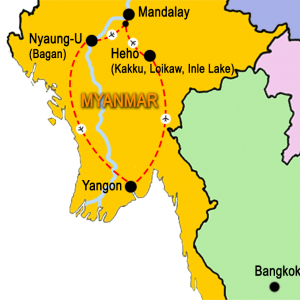USD$ 4,759 – USD$ 5,745
Date: 10 – 23 November 2021 (14 days/13 nights)
Group Size: Minimum of 5, maximum of 12 people
With over a billion people, and being the seventh largest country in size, India is a country of many personalities. From bustling cities to simple villages, the vibrant colours of India are like a kaleidoscope for the camera. Its lively bazaars, rich culinary traditions, spirituality, unique wildlife and world-famous monuments are sure to appeal to every photographer.
Why not come and join us on an amazing photographic journey of India, one in which you are sure to find enriching, inspiring and unforgettable.
Please Note:
1. The online booking system is not yet functional, please contact us directly for further details.
2. Pricing for the tour is actually in AUD and therefore the above USD pricing may vary slightly based on exchange rates.
Description
Day 1: DELHI ARRIVAL
Upon arrival in Delhi you will be transferred to the hotel. At night we enjoy a welcome dinner and meet our fellow travellers.
Day 2: DELHI – JODHPUR (B/L/D)
After breakfast we transfer to the airport to catch our flight to Jodhpur, a city ringed in high stone walls with seven gates and several bastions. The second largest city of Rajasthan was founded by Rao Jodha in 1458 AD. Owing to its unique blue architecture, Jodhpur is often referred to as the “Blue City’ of Rajasthan.
After lunch at our hotel we venture into the city centre to visit Sardar markets and the old city of Jodhpur. We wander around the streets and markets, weaving our way through and around hustling and bustling Jodhpurians as they finish their busy day. Late afternoon we head over to Toorji Ka Jhalra Stepwell before making our way to a special roof-top location for dinner. Overnight at Hotel Radisson, Jodhpur.
Day 3: JODHPUR (B/L/D)
This morning we visit Mehrangarh Fort, a perfect location for viewing and photographing the “blue” city. The tower fort known as Mehrangarh rises 120 metres above the plains. On a clear day one can even see the fort of Kumbalgarh which is 124 kilometres away. We will be able to explore the splendid palaces located in the fort, noted mainly for their exquisitely carved sandstone latticework. There is also an interesting museum within the fort with its collection of royal heirlooms ranging from superb antique weaponry to elephant howdahs of different types to ornate cradles for royal babies. Another exhibit depicts various styles of turbans worn in Rajasthan – with about a hundred of them on display.
Afterwards we visit Jaswant Thada, a white marble memorial built by Sardar Singh in 1899 in memory of Maharaja Jaswant Singh II. The monument, in its entirety is built out of intricately carved sheets of marble. These stones are extremely thin and polished so that they emit a warm glow when the sun’s rays dance across their surface. Within this cenotaph, there are also two more tombs. The Jaswant Thada is a traditional cremation ground of Jodhpur rulers. The grounds are also comprised of exquisitely carved gazebos, a beautiful multi-tiered garden, and a small lake.
Mid-afternoon we will enjoy a casual walk through the streets of the “blue” part of the city ending at a roof-top bar/restaurant for sunset and a light dinner. Our journey back to the hotel will be by rickshaw. Overnight at Hotel Radisson, Jodhpur.
Day 4: JODHPUR – PUSHKAR (B/L/D)
After breakfast we will once again head into the city centre for one last walk around the markets and surrounding laneways. We then commence our journey to Puskar, stopping at Nimaj Palace for lunch.
Pushkar is the location of one of the world’s largest and most famous camel fairs. For many, this is a once-in-a-lifetime opportunity to witness the colour, spectacle and carnival of one of the last great traditional festivals, attracting more than 11,000 camels, horses and cattle, and visited by over 400,000 farmers, traders and villagers from all over Rajasthan. After checking into our hotel we head over the fair in the late afternoon to explore and photograph the camel herders and activities. Overnight at Hotel Dera Masuda, Pushkar.
Day 5: PUSHKAR (B/L/D)
Today will be an intensive day wandering around and photographing the Pushkar camel fair. There will be plenty to photograph, from the countless camels strolling across the sands of Rajasthan to the gathering of livestock and horses, men with their large colourful turbans and an assortment of facial hair, and woman dressed in traditional attire and adorned head to toe with exquisite jewellery.
The festival was initially devoted to the trade of camels, sheep, horses and cows, in which their owners use their persuasive skills to make a sale. The festival also attracts stalls selling colourful clothing and jewellery, tattooists, juggling acts and fire dancers. This is going to be a day to remember. Overnight at Hotel Dera Masuda, Pushkar.
Day 6: PUSHKAR – JAIPUR (B/L/D)
For those keen, this morning we have the option of going out to the fair one last time, otherwise you’re free to relax. Mid-morning we commence our journey to Jaipur.
Jaipur, popularly known as the Pink City, is the capital of Rajasthan state. The kingdom of Jaipur was originally known as Amber, which was also the name of its ancient capital situated eleven kilometres from Jaipur. Its history can be traced backed to the 12th century. In the 1720’s Sawai Jai Singh II, began to build the new city of Jaipur. The city turned out to be an astonishing well-planned one based on the ancient Hindu treatise on architecture, the Shilpa Shastra. Different streets were allotted for different professions such as potters, weavers, dyers, jewellers and bankers. Jaipur has a variety of manufacturing industries. It is especially known for its arts and crafts, jewellery, enamel work, hand-printed fabrics and stone sculptures.
After lunch we visit Jantar Mantar, the largest astronomical observatory built in stone followed by the City Palace complex with its impressive gardens and museums. Overnight at Shahpura House, Jaipur.
Day 7: JAIPUR (B/L/D)
This morning we depart for Amber Fort, stopping briefly to see and photograph Hawa Mahal commonly known as Palace of the Winds. Amber Fort is regarded as one of the most famous forts of Rajasthan. The structure has four different parts, each with a separate entrance. The main entry to the fort is through the ‘Suraj Pol’ or Sun Gate which opens up into the main courtyard.
After lunch sit back and relax whilst we drive about 95km’s east of Jaipur to visit Chand Baori, one of the largest and most beautiful stepwells in the world. Built by King Chanda of the Chauhan Dynasty between AD 800 and AD 900, the thirteen-story stepwell consists of a pavilion and resting room for the royals on one side with the other three sides have some 3500 narrow steps in a symmetrical formation. Overnight at Shahpura House, Jaipur.
Day 8: JAIPUR – VARANASI (B/L/D)
After breakfast we will be transferred to Jaipur Airport for our flight to Varanasi. Varanasi is also known as “Benaras”, and is one of the holiest pilgrimage sites in India. Situated on the banks of sacred river Ganges, Varanasi has been a centre of learning and civilisation for over 2000 years. Besides being a pilgrimage centre, it is considered as an auspicious place to die, ensuring an instant route to heaven.
Upon arrival we quickly check into the hotel before heading down to the Ghats to the see the evening prayers being performed with burning lamps cast on the river’s surface, known as the “Aarti” ceremony. Overnight at Rivatas Hotel, Varanasi.
Day 9: VARANASI (B/L/D)
Today is Dev Diwali or Dev Deepawali, the festival of lights of the Gods, honouring the victory of Lord Shiva over the demon named ‘Tripurasur’. Varanasi, turns into one of the biggest tourist attractions during this festival, attracting thousands of devotees who come to witness this breathtaking sight.
We rise early to make our way down to the Ganges where devotees will bathe. It is believed that the Gods descend to Varanasi on this auspicious occasion to take a dip in the River Ganga, so expect thousands of devotees bathing in their colourful attire.This kaleidoscope of colour is like a smorgasbord for the lens, and we will be watching and photographing it from a boat.
After lunch we visit a local orphanage before once again heading down to the ghats for yet another boat trip, this time to watch and enjoy the night festivities, including the largest and most spectacular “Ganga Aarti” show with 24 Brahmin Priests. The main ritual takes place after seeing the moon rise, at which time the steps of all the Ghats along the River Ganga are illuminated by thousands of lamps. Celebrations continue throughout the night. Overnight at Rivatas Hotel, Varanasi.
Day 10: VARANASI (B/L/D)
Early this morning we travel to the Ghats and undertake a boat ride at dawn along the Ganges, however on this occasion we will have a couple of Sadhu’s on board so we take some portraits with off-camera lighting. After the boat journey, we visit the Burning Ghats then take a short walking tour through the maze of laneways of Varanasi before to returning to the hotel for breakfast.
After lunch we travel to the Muslim area of Varanasi, where they specialise in the weaving of silk scarves before returning to the Ghats area to do some more amazing photography and portraits of the colourful characters. Overnight at Rivatas Hotel, Varanasi.
Day 11: VARANASI – DELHI – AGRA (B/LD)
This morning we prepare for our flight back to Delhi. Upon arrival in Delhi we depart immediately for Agra, stopping briefly to visit the Tomb of Akbar the Great.
If time allows, after checking into our hotel we will visit nearby Chini-ka-Rauza, considered a milestone in Indo-Persian architecture, being the very first building in India exclusively decorated by glazed tiles. The most distinctive feature is the colourful tiles or Chini, from which the mausoleum gets its name. The tomb is rectangular in shape and constructed mainly of brown stone. The walls of the tomb are adorned with inscriptions and coloured tiles.
As the day comes to an end, we continue to Mehtab Bagh (Moonlight Garden) where we watch the sun go down over the river and the Taj Mahal. Overnight at the Crystal Sarovar Premier Hotel, Agra.
Day 12: AGRA (B/L/D)
This morning it’s an early rise as we travel to see the morning light on the Taj Mahal, and also to avoid the crowds that come later in the day.
After breakfast at the hotel we visit the Agra Fort and its Jasmine Tower, an exquisite octagonal turret from which the Mughal ruler Shah Jahan would watch the workmen’s progress on the Taj Mahal. Views of the Taj Mahal from the Fort are amazing.
After lunch we visit Itmad-Ud-Daulah’s Tomb, often referred to as the “baby Taj”. Along with the main building, the structure consists of numerous outbuildings and gardens. The tomb, built between 1622 and 1628 represents the transition between the first phase of monumental Mughal architecture – primarily built from red sandstone with marble decorations, as in Humayun’s Tomb in Delhi and Akbar’s Tomb in Sikandra – to its second phase, based on white marble and pietra dura inlay – most elegantly realized in the Taj Mahal.
Late afternoon we will go for a casual walk around a residential area where there will be plenty of opportunities to photograph the locals going about their lives. Overnight at the Crystal Sarovar Premier Hotel, Agra.
Day 13: AGRA – DELHI (B/L/D)
This morning we depart early on what will be a lengthy drive back to Delhi. About an hour out of Agra we stop at Fatehpur Sikri to visit Jama Masjid mosque built in the 17th Century. This is one of the largest Mosques in India with some of the designs reflecting beautiful Iranian architecture.
Afterwards we continue our journey back to Delhi where we check into the hotel before making our way into the ancient city of Old Delhi. Mughal Emperor Shah Jehan in 1650 switched the Mughal capital from Agra to Delhi. Shah Jehan, who possessed an exquisite talent, particularly in architecture, created the seventh city and in the process brought about Delhi’s glorious renaissance. Here we experience the hustle and bustle of Chandni Chowk on a rickshaw. Chandni Chowk is a busy shopping area with markets full of spices, dried fruit, silver jewellery and vivid saris, while the narrow side streets are crowded with tiny shops selling essential oils, stationery and traditional Indian sweets. This is an experience you will never forget, ending with a more relaxed visit of Fatehpuri Masjid, a 17th-century mosque. Overnight at Royal Plaza Hotel, Delhi.
Day 14: DELHI – DEPARTURE (B/L)
We commence our final day with a tour of New Delhi. New Delhi was designed and built by the British in the 1920’s. It’s a city of wide boulevards impressive government buildings, green parks and gardens. In 1911 King George V announced the transfer of the capital from Calcutta to Delhi. Lutyens designed an imperial city which had palatial-sized buildings set amid broad tree-lined avenues punctuated by Mughal style gardens, complete with fountains and shallow pools. Our first stop will be Agrasen ki Baoli which is only a short drive from our hotel and the final of three different stepwells we will see and photograph during our tour. Our drive then takes us along the Ceremonial Avenue, imposing India Gate, President’s Palace and Parliament House. We then visit two monuments from Delhi’s past, Qutub Minar with the largest minaret in the world followed by Humayun’s Tomb, built in 1570 and inspired by Persian architecture.
After lunch we return to our hotel to prepare for the conclusion of our amazing photographic adventure and journey home.
Additional information
| Details | Included The complete tour as per itinerary, transfers if arriving/departing with the group leader, domestic airfares within India and any domestic airport and Airline taxes & charges, meals as specified in the itinerary (B/L/D), ground transport with experienced driver/s, 4-5 star accommodation, fully escorted by experienced professional photographic leader/tour leaders and local guides where required, admission fees, rides and still camera fee for one camera. Not included International flights, India Visa (Approximately AUD$95), personal travel insurance (requirement of joining tour), expenses of a personal nature (laundry, phone calls, personal tipping), any meals other than those specified, any drinks (alcoholic or non-alcoholic), optional tours/activities, items of personal nature, excess baggage fee, tips and gratuities. |
|---|






































